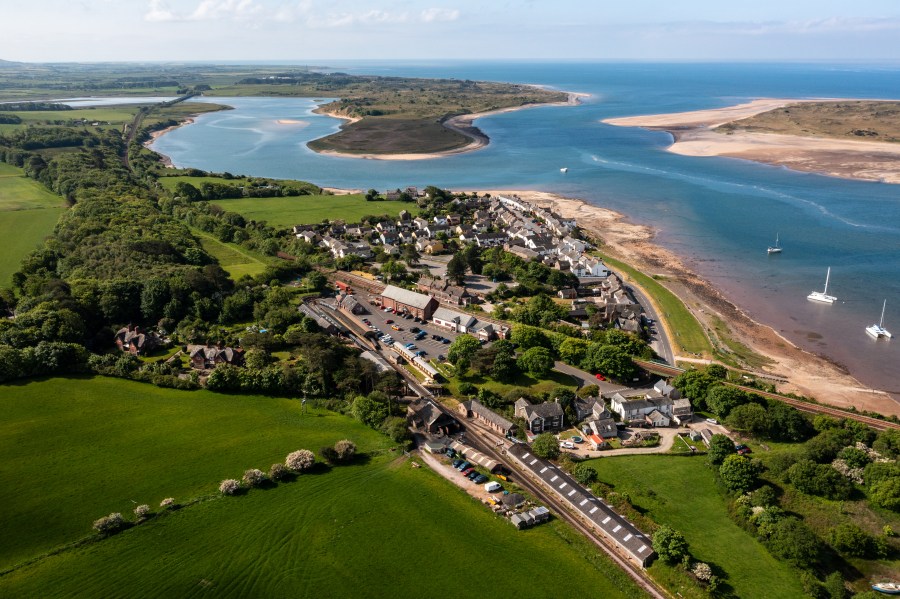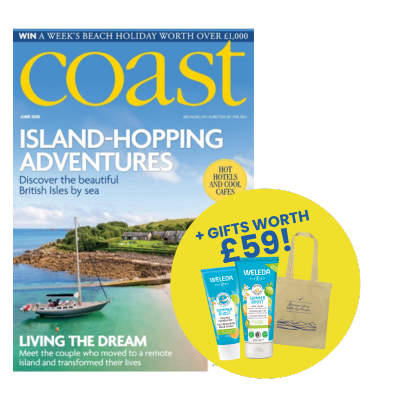It’s often referred to as Britain’s forgotten coast but there’s so much to discover on the edge of Cumbria. CHRISSY HARRIS talks to the people who live and love this part of a special county.
“You finding it hard to understand my accent?”, says Peter Stevenson, halfway through our conversation about his hometown of Maryport on the west Cumbrian coast. “I can tell,” he adds, laughing.
I think the giveaway was the fact I thought Peter was telling me about a lido when he was actually explaining the history of the Maryport lighthouse, the oldest cast-iron lighthouse in the UK, which was captured by the renowned artist LS Lowry in several of his paintings.
Lighthouse, lido – they can sound very similar to a softy southerner who, until about a week ago, didn’t know where Maryport was or even really that Cumbria had a coastline. Turns out, I’m not alone.
“Nobody knows about it,” says Peter, who has lived here for all of his 74 years. He’s the chair of the Maryport Maritime Heritage group, the organisation that manages the local museum. “The Lake District gets a lot of publicity, but this side gets forgotten about. You’d be surprised at the number of people who come into the museum who tell me they didn’t know anything about this coast.
“Then they get here, really enjoy it and say they wish they’d known about it before.”
As well as his role at the museum, Peter takes visitors on tours of Maryport’s harbour.
The town, once the site of a Roman port, is famous for its shipping and used to launch huge 60ft vessels sideways (or broadside) at a spot up the river Ellen because it wasn’t wide enough to do it any other way.
Maryport is also the birthplace of Thomas Ismay, owner of the White Star Line, the shipping firm that included Titanic in its fleet.
Fishing was big in Maryport, too. These days a few trawlers still fish out of the harbour and the fishermen sell part of their catch directly to customers on the quayside.
Peter goes on to talk about how Maryport is changing with regeneration plans and investment projects designed to make it an even better place to live in and to visit. There is a desire to encourage more tourism as the town moves away from its industrial past to a new future. An award-winning, architect designed apartment development has been built by the harbour, there’s a new art gallery, a ‘creative hub’ planned for in the old Carlton Cinema and the museum is being moved to a new premises in a former church.
“And all that’s just our little bit, just our town,” says Peter. “There’s much more to it, of course.”

He says a final ‘ta-ra’ (I’m getting used to the accent now) and leaves me to find out about the rest of the Cumbrian coast. It’s more than 150 miles of shores and beaches with the Hadrian’s Wall UNESCO World Heritage Site running all the way down to Ravenglass. Then there’s the Arnside and Silverdale National Landscape in the south, the Solway Coast National Landscape in the north and much more in between.
And yet, we we all just head for the lakes.
“Well, we are a little bit more remote here than the central Lake District but if you make the effort to get to us, it’s definitely worth it,” says west coast local Claire Winter-Moore. “It’s a very, very special place,” she adds.
Claire has worked at the Beacon Museum in Whitehaven and later for the town’s tourist information centre before taking on her current role at the Ravenglass and Eskdale Railway. This seven-mile line – known locally as La’al Ratty, which means ‘little railway’ in Cumbrian – is said to be one of the most beautiful routes in England. The five steam engines, part of the Lake District narrow gauge fleet, take passengers on a scenic tour which starts beside the seaside in Ravenglass and then chuffs onwards to Muncaster Mill and up into the fells.
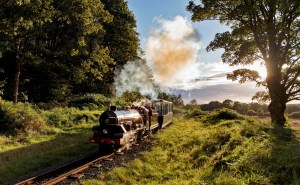
Claire says it’s always a delight to talk to passengers who have made it to this special part of England’s third largest county for the first time.
“The first thing they usually do is comment on their journey to get here!” says Claire, well used to the chat about sat navs taking people ‘up the passes’, as it were. The Wrynose or Hardknott passes are the scenic but steep, single-track routes that drop down from the central Lake district into west Cumbria.
“It’s beautiful but it can sometimes be a little bit… hairy,” says Claire. “But when they get here, people are always surprised at how lovely it is.”
She says passengers – especially city folk – are amazed at the landscape and rural scenes, such as the local sheep hanging out next to the railway line.
“It’s nothing to us to see things like that but to visitors it’s something really special,” says Claire. She goes on to say how she’s noticed tourism gradually building in the area, especially since the pandemic. But it’s never Lake District busy here and that’s no bad thing.
“It’s a little bit calmer and quieter than the central lakes,” says Claire. “If you want a more relaxing break, come out here to the west coast. It’s beautiful.”
ravenglass-railway.co.uk; visitlakedistrict.com; cumbriatourism.org
MORE TO SEE AND DO
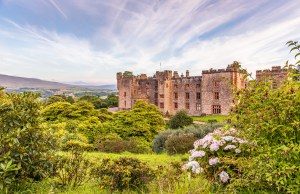
Spot spooky goings on: enter Muncaster Castle if you dare. This is one of the UK’s most haunted castles, with tales of Tom Fool (aka Thomas Skelton) who is said to play tricks on family, staff and visitors. There are also 77 acres of gardens to explore, plus a hawk and owl centre on site. The castle and estate are owned by the Frost-Pennington family.
Ewan Frost-Pennington spent years working in California before the chance came to return to his ancestral home on the Cumbrian coastline.
“It’s a wonderful place to be,’ says Ewan. “I’m always amazed that the area remains relatively undiscovered- something that gives it a magical quality.” muncaster.co.uk
Dive into maritime history: currently in its temporary home in Curzon Street, Maryport Maritime Museum celebrates the town’s proud heritage with paintings, models, Roman artefacts and many other interesting objects. It’s hoped the museum will open in the Christ Church building later this year. They’re on the lookout for volunteers here, too. facebook.com/people/Maryport-Maritime-Museum/100068186833616/
Stop at The Dock: Barrow-in-Furness was a boom area for heavy industry during Victorian times and the coastline changed dramatically. Find out about this and more at The Dock Museum. There are exhibitions, quizzes for kids, a playground and walks around Walney Channel. dockmuseum.org.uk
Save Grange Lido: there’s a campaign in Grange-over-Sands to restore their art deco lido, which closed in the 1990s. The first phase of work – on the terracing, sea defences and central pavilion – is expected to be completed this summer. savegrangelido.co.uk
See the birds and the bees: St Bees, with its long sandy beach and towering cliffs, is one of the most popular destinations on the Cumbrian coast. St Bees Head is home to the largest seabird colony in north-west England. The cliff edge from the north end of the promenade to Saltom Bay is an RSPB reserve with observation stations for visitors to enjoy the wildlife and the views over to the Isle of Man.
Travel in style: They do a good line in scenic railways around here. The Cumbrian Coast Railway runs from Carlisle to Barrow-in-Furness, via Workington and Whitehaven. It’s the ideal way to stop off and stay along this route at your leisure. It also allows you to say you’ve been to place called Flimby.
The Furness Railway starts in Lancashire and also works its way along the coast to Barrow-in-Furness.
Get on your bike: the West Cumbria Cycle Network is 72 miles of cycle routes linking off-road sections on disused railways with the minor road system. The route links Cockermouth, Workington, Distington, Whitehaven, Cleator Moor and Ennerdale. There are branches from Cleator Moor to Egremont and Sellafield, and Workington to Maryport.
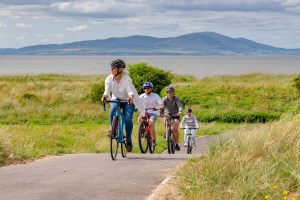
EAT, DRINK, STAY
The Ratty Arms on the platform of Ravenglass station on the Cumbrian Coast Line, serves pub classics and is dog-friendly.
The Pennington Hotel in Ravenglass has stylish rooms, 50 varieties of gin and a varied menu which celebrates Cumbrian produce – what more can you ask for?
The Gather is a community-owned and run cafe and shop in Ennerdale Bridge. Art exhibitions are held upstairs.
Embleton Spa Hotel has rooms and apartments, plus a bar and bistro restaurant. The serve a 40oz tomahawk steak Sunday roast sharing board that serves five (or one, depending on your appetite..).
Family-run Marina View Cafe in Maryport is doing good things with great views. They do a homemade hot beef sarnie or a fish finger butty or fresh pies…tough call.
The Vagabond on the harbour in Whitehaven is a traditional pub with real ales, good food and live music.
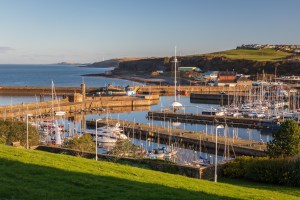
Coming soon: a new architect-designed cafe and visitor centre on Silecroft beach is due to open this year. The Silecroft Beach Cafe is part of the Connecting Cumbria’s Hidden Coast Programme, which is led by Copeland Council and funded by the Coastal Communities Fund and Sellafield Ltd.
Seacote Hotel and Holiday Parks enjoys a prime position by the beach in St Bees. Choose between staying in the hotel or a self-catering break in one of the luxury holiday caravans.

